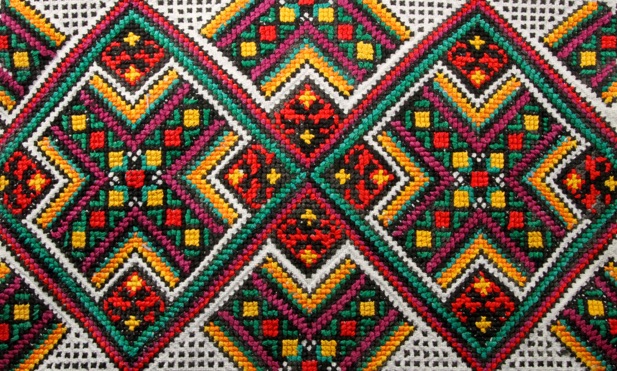Geometric Motifs
Геометричні мотиви
Geometric Motifs
Геометричні мотиви

Simple Shapes
Among the most popular pysanka designs are those which incorporate many geometric figures, like the embroidery pictured above. I’ve described some of the basic geometric figures below and given my understanding of what they symbolize. Some of the simple geometric motifs (crosses, stars) represent more complex concepts which put them in other categories.
Below are brief descriptions of many Geometric motifs and symbols. For more detailed information and examples of pysanky with these motifs, go to the corresponding pages in the Geometric Motifs Gallery.
SOROKOKLYN
The egg itself is most often divided by straight lines, using the traditional divisions, into squares, triangles and other simple geometric shapes. These shapes are then filled with other forms and designs. One interesting division which produces a geometric design is often called "forty triangles" (there are actually 48) or Sorokoklyn (Сорококлин, from «сорок клинців» meaning “forty wedges”). Its original symbolism, if any, has been lost; what power it has symbolically would come from its constituent triangles. In recent times it has been said to symbolize of the forty days of Lent, the forty martyrs, the forty days that Christ spent in the desert, and the forty life tasks of married couples. (No, I don’t know what they are.)


More examples of the sorokoklyn division and information here.
RHOMBS AND TRIANGLES
Rhombs (including squares and rectangles) and triangles are simple geometric motifs, and can be found on a variety of ancient Ukrainian artifacts. They symbolized plowed fields. “Dashed” versions (those with a fringe) could also symbolize rain.





The triangle is also one type of representation of the various trinities: in pagan times it symbolized the three elements (air, fire and water), the cycle of life (birth, life, death) or the family unit (mother, father, child), while in modern times it is taken to symbolize the Holy Trinity.




More examples of rhombs and triangles and information about symbolism here.
TRIPOD
The tripod has many different manifestations in pysanka symbolism, and many different meanings. It can be assume the meanings of the various trinities, much like the triangle.
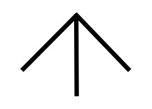

But, when drawn in the form below, it is also one of the earliest and simplest representations of the sun; the tree legs of the tripod are three rays of light emanating from the sun.




More examples of tripods and information about symbolism here.
SPIRALS AND CURLS
The spiral is a powerful motif, and is one of the many ancient depictions of the Zmiya (Serpent), the god of water and earth.
The spiral was drawn onto pysanky as a protective motif. It was said to protect a house and its occupants from evil spirits: those evil spirits which entered the house would be drawn to the spiral, and then trapped in its endless curves.
Curls are small, truncated spirals, and have the same meaning. These are examples of simple curls:
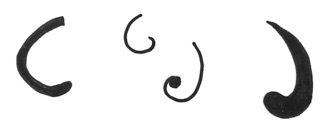
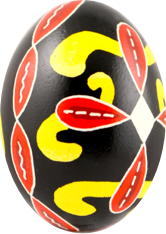

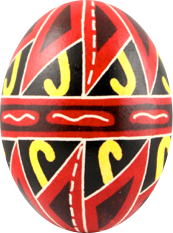
And these are examples of a variety of spirals:

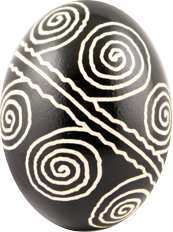
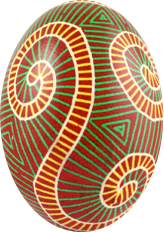
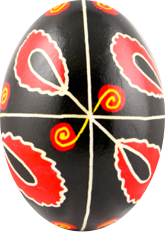
More examples of spirals and curls and information about symbolism here.
DOTS
Scattered or clustered spots can be said to represent either stars or cuckoo birds’ eggs, the latter being a symbol of spring. In Christian times, they are said to symbolize the tears of the blessed Virgin. A legend is told of how Mary gave eggs to the soldiers guarding the cross; she entreated them to be less cruel to her son, and she wept. The tears of Mary fell upon the eggs, spotting them with dots of brilliant color. These were the first pysanky.
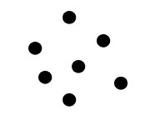
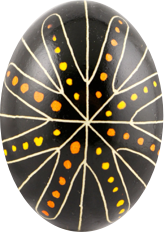
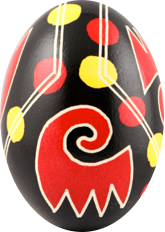
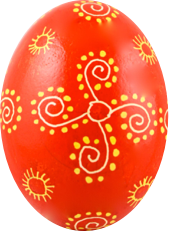
More examples of dots and information about symbolism here.
HEARTS
Simple hearts are not a common motif on traditional pysanky. Most often, heart shapes are part of a plant motif (leaves or petals), but they can also be found independently as well. Hearts are universal symbols of love, but they were also the symbol of the Rozhanitsi (Рожаниці), the ancient Slavic goddesses of birth. These goddesses not only promoted fertility, but protected the home, the family, and the hearth.
The heart motifs found on pysanky can be love symbols, and were used by young women who would write them on the pysanky they wanted to give to the young men they liked, to express their affection for them.
Some Ukrainian sources claim the heart as a Christian symbol, the “Sacred Heart of Jesus.” This is much less likely, would be a fairly recent addition, and would only apply to some areas of western Ukraine, where the Greek Catholic (Uniate) religion is practiced.
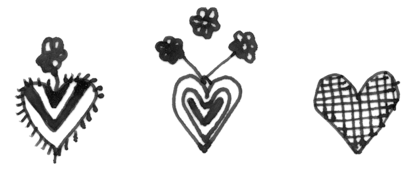
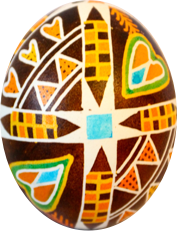
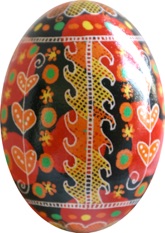
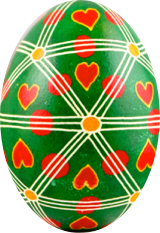
More examples of hearts and information about symbolism here.



Back to MAIN Symbolism home page.
Back to MAIN Pysanka home page.
Back to Pysanka Index.
